Houston Zoo Opens Groundbreaking “Birds of the World” Exhibit
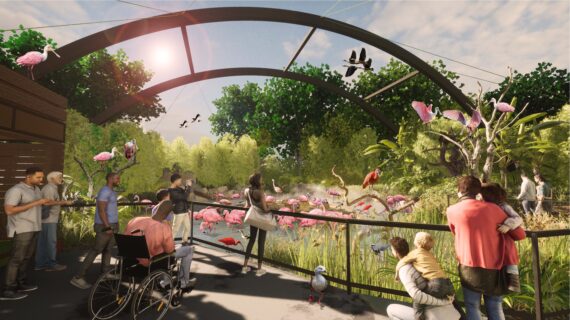 This Friday, the Houston Zoo will welcome guests to its highly anticipated Birds of the World exhibit, the final animal addition to the Zoo’s transformative Keeping Our World Wild Centennial Capital campaign. This new exhibit invites guests to explore the incredible diversity and beauty of bird species from around the globe, showcasing the Zoo’s ongoing commitment to conservation and education.
This Friday, the Houston Zoo will welcome guests to its highly anticipated Birds of the World exhibit, the final animal addition to the Zoo’s transformative Keeping Our World Wild Centennial Capital campaign. This new exhibit invites guests to explore the incredible diversity and beauty of bird species from around the globe, showcasing the Zoo’s ongoing commitment to conservation and education.
Building on a Century of Conservation Excellence
Since announcing the Keeping Our World Wild Centennial Capital campaign in 2018, the Houston Zoo has completed a series of transformative projects, including the Hamill Foundation Black Bear Exhibit, Cypress Circle Café, and award-winning exhibits such as the Kathrine G. McGovern Texas Wetlands, South America’s Pantanal, and the Galápagos Islands. Birds of the World, opening on August 30, 2024, is the final animal exhibit in this ambitious, multi-phase plan, enhancing the Zoo’s 55-acre site in Hermann Park.
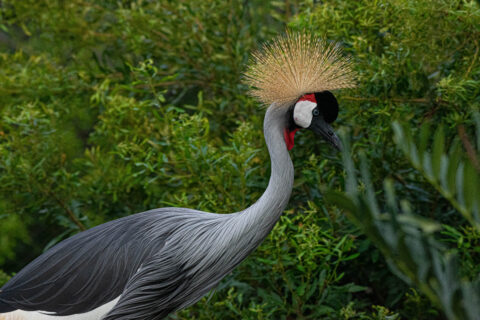 Exploring Global Avian Habitats
Exploring Global Avian Habitats
Birds of the World features three spacious aviaries, each meticulously designed to replicate distinct global ecosystems:
- African Savanna: This aviary spotlights the majestic grey crowned cranes and highlights the Zoo’s conservation partnership with Dr. Olivier Nsengimana of the Rwanda Wildlife Conservation Association, aimed at saving these endangered birds.
- North American Woodlands: Home to a variety of American songbirds, including blue grosbeaks and indigo buntings, this exhibit connects visitors to the beautiful birds found in their backyards. The Houston Zoo, in partnership with the U.S. Fish & Wildlife Service, works to protect these songbirds from the illicit wild bird trade.
- South American Wetlands: This immersive aviary allows guests to walk among a spectacular variety of South American birds, including the perennial favorite, Chilean flamingos. The Zoo also serves Bird Friendly® coffee, demonstrating support for healthy habitats for birds in South America.
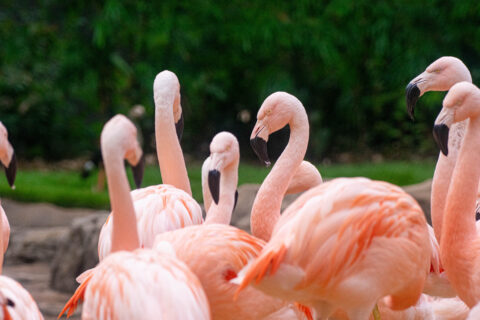 State-of-the-Art Avian Conservation Environment (ACE) Building
State-of-the-Art Avian Conservation Environment (ACE) Building
Complementing these immersive experiences is the brand-new Avian Conservation Environment (ACE) building. This state-of-the-art facility provides updated spaces for the Zoo’s bird care professionals, including behind-the-scenes breeding programs for critically endangered species like the blue-billed curassow and Saint Vincent parrot. The ACE building underscores the Houston Zoo’s leadership in the care and conservation of a wide range of birds.
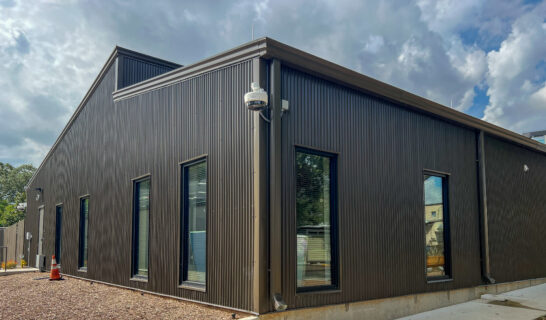
The ACE building has been awarded LEED Gold by the U.S. Green Building Council. The exhibit aviaries and their sustainable features were included in the certification, which is rare for zoo exhibits.
- Water use reduced by 84% through low-flow plumbing fixtures, efficient irrigation, and the use of native plants.
- The ACE building will be 34% more energy efficient than a standard building, saving nearly 50,000 kWh per year.
- The interior of the ACE building eliminates toxic materials and ensures healthy indoor air quality by using low-emitting flooring, wall panels, and ceilings that meet rigorous third-party standards and using 100% LED lighting, which avoids the use of mercury.
- And, of course, the project has 100% bird-friendly glass!
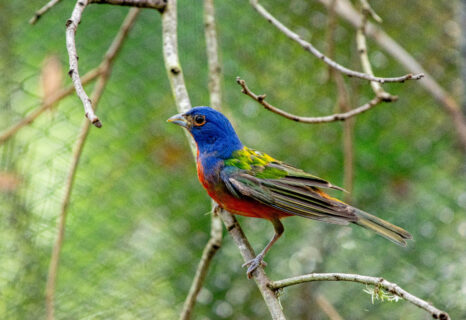 A Global Commitment to Avian Conservation
A Global Commitment to Avian Conservation
Positioned along a major migratory flyway, Houston plays a crucial role in the lives of billions of birds that traverse its skies annually. The Zoo’s initiatives, from applying bird-safe window films to reducing light pollution during migration seasons, demonstrate its dedication to safeguarding avian populations both locally and globally.
The Houston Zoo invites the community to celebrate the opening of Birds of the World. Visitors are encouraged to engage in interactive workshops, meet bird care professionals, and learn how to contribute to bird conservation efforts in their own backyards. Together, we can protect birds as they migrate through Houston and beyond.
